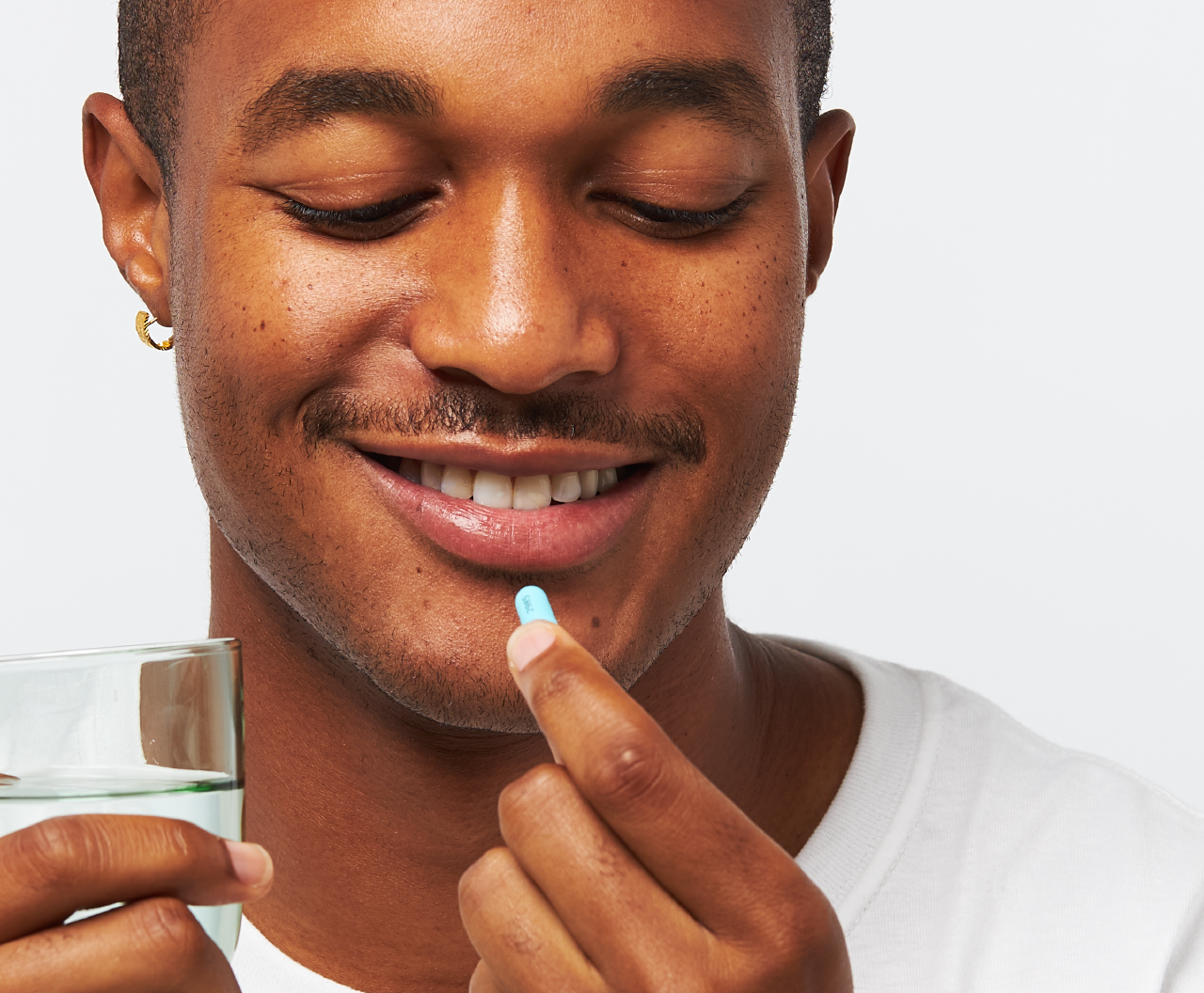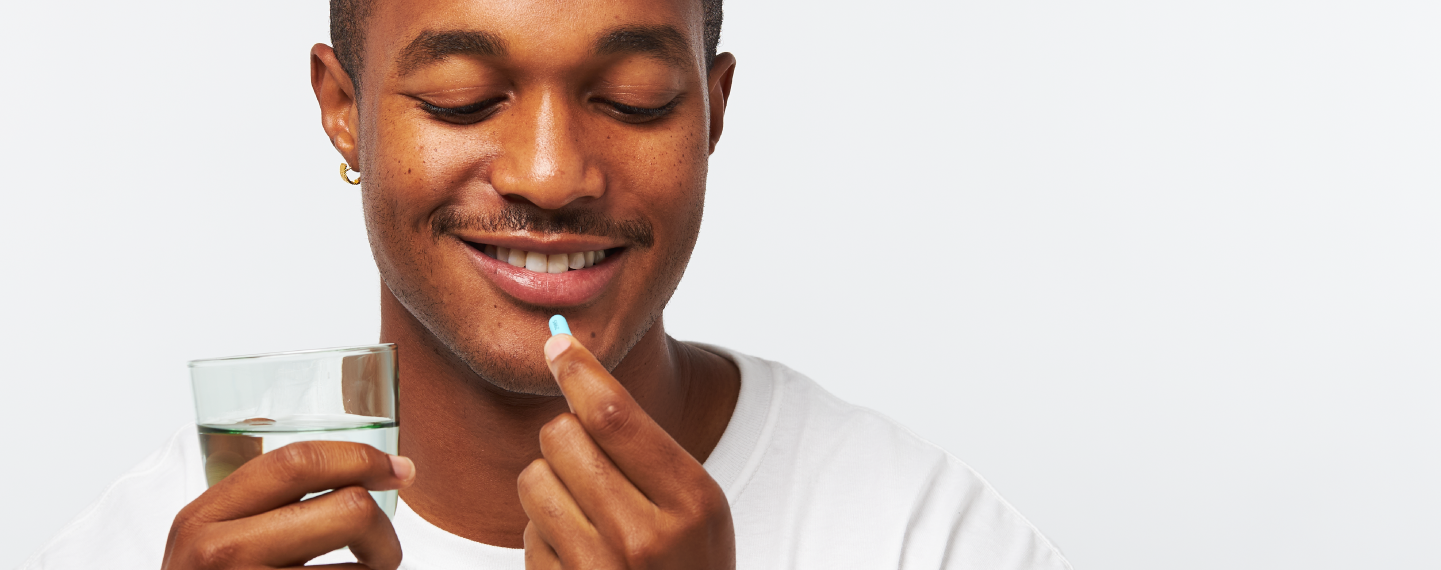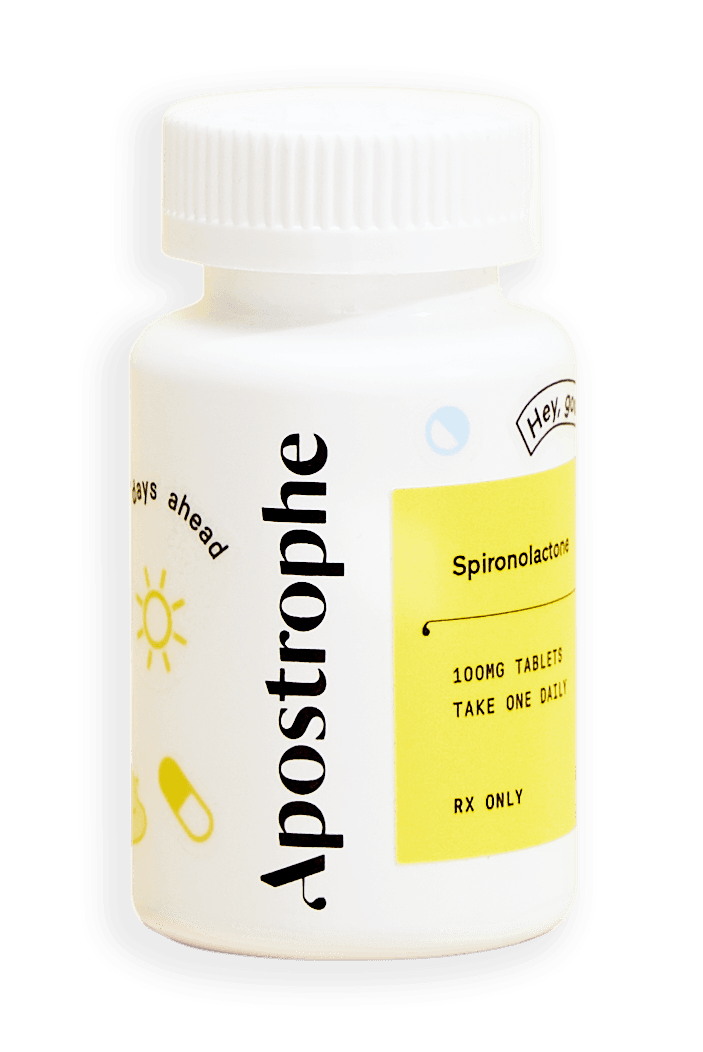Education
Antibiotics For Acne


SHARE
Education
Antibiotics For Acne
Medically reviewed by Aimee Paik, MD
Written by Apostrophe Team
Last updated 4/1/2024
When it comes to fighting acne, there are many different approaches you can take. While some people may respond to more traditional ingredients—like benzoyl peroxide, retinoids, and salicylic acid—some severe cases can require additional skincare solutions.
What is one of the most common and effective methods of treating moderate to severe acne? Antibiotics. While this may seem surprising to some, antibiotic therapy actually provides a number of benefits beyond clearing up bacterial infections. In this article, we’ll be taking a deeper look at how antibiotics can treat acne.
How Do Antibiotics Treat Acne?
When you hear the term “antibiotics,” the first thing that comes to mind is probably bacterial infections. While antibiotics are used to treat bacterial infections (and skin bacteria can contribute to acne) this actually is not the main reason why dermatologists prescribe them.
Many antibiotic strains have strong anti-inflammatory properties. When taken orally or even applied topically, antibiotics can help reduce the redness, irritation, and inflammation caused by moderate and severe acne. Similarly, antibiotics may also be prescribed to treat a number of other inflammatory skin conditions, such as rosacea.
Chronic inflammation not only makes acne more visible but also more painful. Antibiotics are often prescribed alongside other types of acne treatments (but more on that later).
By reducing the inflammatory part of acne, antibiotics work fast to calm breakouts while other treatments take effect. This dual approach is often preferred by dermatologists for serious cases of inflamed and irritated skin.
Which Types of Antibiotics Are Used to Treat Acne?
Not all antibiotics are going to work well at calming acne and inflammation, but there are a number of different strains that your dermatologist may prescribe. Some of the most common antibiotics used to treat acne include:
Tetracyclines – Tetracyclines are a family of broad spectrum antibiotics that are used to treat both infections and inflammatory skin conditions. Common tetracyclines prescribed for acne treatment include minocycline and doxycycline.
Non-tetracycline oral antibiotics – While tetracyclines are commonly prescribed to treat acne and other skin conditions, other antibiotic strains may be prescribed in an oral form, as well. Some of the most popular strains of non-tetracycline oral antibiotics include sulfamethoxazole-trimethoprim and cephalexin.
Topical antibiotics – Finally, we have the unique category of topical antibiotics in the treatment of acne. Topical antibiotics may do a better job at killing off acne-inducing bacteria in the skin, but they are generally used for the same reason as oral antibiotics: to calm the body’s inflammatory response. The two most common topical antibiotics used to treat acne are clindamycin and erythromycin.
Which Type of Antibiotic Treatment is Right for Me?
Ultimately, the type of antibiotic treatment you use will be determined by your dermatologist based on your skin’s unique needs and your unique biology. With that in mind, certain variables may influence the antibiotic type your dermatologist chooses. These factors include:
Allergies – Many people suffer from adverse or allergic reactions when taking certain types of antibiotics. If you know of any allergies to antibiotics that you may have, it’s important to discuss this with your doctor before developing a treatment plan.
Severity of acne – The severity of your acne and inflammation will play an important role in the type of antibiotic treatment and the dose that’s going to work best for you.
Other treatments – Another factor to consider when taking antibiotics for acne is the rest of your skincare and medication routine. Your dermatologist will need to know of any other acne treatments and medications you’re currently taking or have tried in order to avoid any bad reactions.
Oral antibiotics are typically prescribed for severe cases of acne and inflammation. Topical antibiotics, on the other hand, can be used for milder cases, or as a safer maintenance method alongside oral antibiotics.
What Do You Mean By Maintenance?
The tricky thing about using antibiotics to treat acne is that they aren’t intended for long-term use. In particular, taking oral antibiotics for an extended period of time can lead to antibiotic resistance: a dangerous phenomenon where bacteria become resistant to a particular antibiotic. This can lead to problems in the event that a bacteria develops resistance to current available treatments and becomes uncontrollable. .
That being said, topical antibiotics may be a better option or addition to your skin care plan. This is because antibiotic resistance is less likely if two different types are being used at the same time—especially with a combination of topical medication and oral treatments. For example, your dermatologist may develop an acne treatment plan that incorporates both oral minocycline and topical clindamycin, as well as another topical treatment to help resurface the skin and fight the root cause of your acne.
What Other Treatments are Combined with Antibiotics?
Speaking of combination treatments, antibiotics are never recommended to treat acne on their own. Instead, they should be used as a temporizing measure while the skin responds to other topical or oral treatments.
Your dermatologist will typically prescribe oral antibiotics alongside a topical acne treatment. Common ingredients used in combination with antibiotics include:
Retinoids – Retinoids—particularly strong ones like tretinoin—are often prescribed to treat moderate to severe cases of acne. This family of vitamin A derivatives help promote cell turnover and reduce breakouts for healthy, clear skin. Topical treatments like tretinoin can also lead to an issue known as “purging.” This is a reaction the skin may have to retinoids, where breakouts actually get worse before they get better as pores unclog. Enlisting antibiotics in the early stages of topical retinoid treatments can help reduce the risk of purging and allow for a smoother transition into your new treatment plan.
Benzoyl peroxide – Benzoyl peroxide is an antimicrobial treatment that fights acne by clearing out pores and killing skin bacteria. By attacking acne from the outside, benzoyl peroxide works well in combination with an oral antibiotic treatment. It also works to prevent antibiotic resistance since it works in such a different way to kill acne-inducing bacteria.
Antibiotics may also be prescribed alongside another prescription acne medication, such as spironolactone for hormonal acne. Spironolactone is an oral medicine for acne that works to block androgens. High levels of androgens can lead to overproduction of oils and cause hormonal acne.
Side Effects of Antibiotic Acne Treatment
Like any other prescription acne medication, using topical or systemic antibiotics to treat acne can come with certain side effects.
Most notably, antibiotics should not be prescribed for an extended period of time due to the risk of antibiotic resistance. Your dermatologist will typically keep this treatment between three and six months (and no longer than a year).
It’s also recommended to take other precautions when undergoing antibiotic treatment for acne:
Sun protection – While sun protection is always important to keep skin healthy, certain antibiotic types such as tetracycline can lead to greater sun sensitivity. When taking antibiotics for acne, you’ll want to avoid prolonged sun exposure and always remember to use a broad-spectrum SPF 30+ on the face and body. Protective clothing and headwear is also recommended when sun exposure cannot be avoided.
Digestive issues – Oral antibiotics can kill off the good bacteria in the gut, leading to digestive issues and nausea. This is why it’s crucial to take your antibiotics with food and probiotics to keep the GI tract functioning normally.
Proper dosage – It’s important to stay on the recommended treatment plan prescribed by your dermatologist. Patients should be consistent with their treatment and take the proper dosage each day. If the topical or oral medication for acne is not used consistently, progress may be delayed.
Do Antibiotics Work Well for Acne?
Yes! But it’s important to understand what they’re actually used for. Patients should not expect antibiotic treatment to be a cure-all for their acne. Instead, antibiotics will do a great job at treating acne symptoms, and preparing the skin for a healing journey moving forward.
Apostrophe: Your One-Stop-Shop for Acne Solutions
Are you struggling to treat your acne on your own? Or perhaps you’re tired of pricey copays and in-person or online dermatologist visits and calls? No matter what the case, Apostrophe is here to change your personalized skin care game for the better.
Apostrophe is a new way to give your skin the care it deserves. With our unique approach, all Apostrophe patients will receive a customized treatment plan crafted by a board-certified dermatologist. For only $20, you’ll get an in-depth consultation that will help your dermatologist or provider build an acne treatment plan tailored to your skin’s unique needs.
Once you’ve got a plan, Apostrophe makes it easy to order everything you need. From antibiotics and other oral medications, to prescription-strength topical treatments, you’ll have access to all the products you need right from your phone. Not only that, but Apostrophe cuts out the middleman so your topical treatments are only $25 a month for a 3-month supply.
Skip the stress of figuring out an acne treatment plan, and leave the hard work to the experts. Get the skincare solutions you need today, with Apostrophe!
Sources:
US National Library of Medicine
National Institutes of Health. Management of Acne. https://www.ncbi.nlm.nih.gov/pmc/articles/PMC3080563/
US National Library of Medicine
National Institutes of Health. Oral Antibiotics. https://www.ncbi.nlm.nih.gov/pmc/articles/PMC3050614/
Apostrophe. A Winning Combination: Oral and Topical Treatment. https://www.apostrophe.com/blog/a-winning-combination-oral-topical-treatment/
Shop this post

Clindamycin

Oral doxycycline

Oral minocycline
Like what you just read? Sign up for our email list to get the scoop on skincare science delivered straight to your inbox.

Education
What is milia?
What is milia? Today, we’re jumping into one type of bump that you may have heard about most commonly in infants — milia.
Read More
Education
Best moisturizer for acne-prone skin
If you have combination acne-prone skin, figuring out which moisturizer is best for your skin might be tough. In this guide, we break down the best moisturizer for combination, acne-prone skin.
Read More
Education
How to build a face care routine
As you get into skincare, it might seem overwhelming, especially trying to figure out the order you're supposed to apply products in. Below, we detail how to build a face care routine for your skin!
Read More
